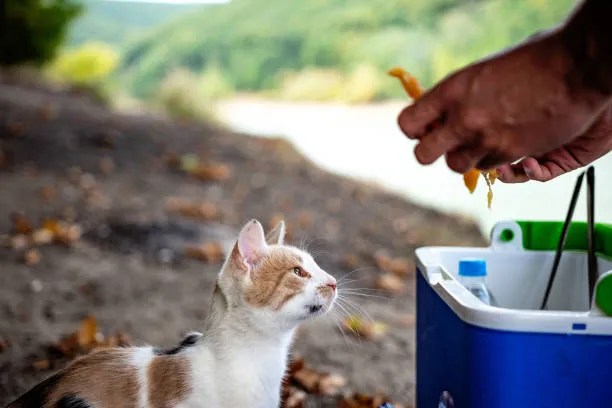The curiosity of our feline friends knows no bounds, often leading them to investigate intriguing textures and intriguing smells, like the briny whisper of seaweed. So, when your whiskered wonder sets their sights on that bag of nori wraps or the sushi remnants in the trash, you might wonder: Can cats eat seaweed? Buckle up, cat-venturess, because we’re embarking on a deep dive into the ocean of seaweed for felines!
Yes, cats can safely munch on seaweed in moderation under the right conditions. In fact, these aquatic greens offer a surprising boost of nutrients and potential health benefits, making them a tempting treat for many pet parents. But before you unleash your kitty Kraken on a kelp buffet, let’s navigate the currents of caution and explore the safe harbor of seaweed snacks for curious cats.
What Type of Cats Should Set Sail for Seaweed Snacks?

Not all cats are created equal when it comes to seaweed savoring. While generally safe for healthy adult felines, keep in mind the following:
- Kittens and senior cats: Their delicate digestive systems might be overwhelmed by seaweed’s unique fiber content. Stick to their tried-and-true cat food for now.
- Cats with pre-existing health conditions: Consult your veterinarian before introducing any new food, including seaweed, to cats with kidney disease, thyroid issues, or other health concerns.
Types of Seaweed to Feed Your Feline Friend:
Not all seaweed is created equal, and some varieties can be downright dangerous for cats. Here’s a quick guide to safe and yummy seaweed choices:
- Nori: This thin, papery seaweed is often used in sushi rolls and is a popular choice for cats. It’s low in iodine and sodium, making it a safe and tasty treat.
- Kombu: A thicker, chewier seaweed with a stronger flavor, kombu can be offered in small pieces as an occasional treat. Keep an eye out for seasoned kombu, as the added salts and spices can be harmful.
- Wakame: Another thin and mild-flavored seaweed, wakame is a good option for picky eaters. Just like kombu, be mindful of seasoned varieties.
- Dulse: This reddish-brown seaweed is packed with nutrients and has a slightly sweet flavor that many cats enjoy. Offer it in small pieces as a healthy treat.
Steering Clear of Stormy Seas: What Seaweed to Avoid:
Some seaweed varieties can be toxic to cats due to high levels of iodine, arsenic, or other harmful compounds. Always steer clear of the following:
- Bladders wrack: This common seaweed can cause iodine poisoning in cats.
- Kelp: High in iodine and arsenic, kelp should be strictly avoided for feline friends.
- Hijiki: Another iodine-rich seaweed, hijiki should be left on the shelf when it comes to cat treats.

How to Serve Your Cat Seaweed the Purrfect Way:
Now that you have your seaweed selections ready, remember these important tips for safe and enjoyable snacking:
- Start small: Introduce seaweed gradually, offering a tiny piece the size of your fingernail and monitoring your cat for any digestive upset.
- Keep it raw and unseasoned: Avoid cooked seaweed, as it can lose its nutritional value and contain harmful additives. Opt for raw, untreated seaweed whenever possible.
- Rinse away the ocean: Give your seaweed a quick rinse with fresh water to remove any sand or debris.
- Hydration is key: Ensure your cat has access to plenty of fresh water after enjoying their seaweed snack.
Final Words: Bon Voyage with Seaweed Snacks!
can cats eat seaweed While not a staple in your cat’s diet, seaweed can be a safe and healthy occasional treat when offered with care and moderation. As with any new food, consult your veterinarian if you have any concerns about your cat’s individual needs. So, set sail with your seaweed snacks, keep a watchful eye on your furry sailor, and let them enjoy a taste of the ocean’s bounty!
Remember:
- Always choose safe seaweed varieties like nori, kombu, wakame, and dulse.
- Avoid seaweed high in iodine, arsenic, or other harmful compounds.
- Introduce seaweed gradually and monitor your cat for any adverse reactions.
- Keep seaweed snacks small and occasional.
- Hydrate your cat well after offering seaweed treats.
With these tips in tow, you and your feline adventurer can happily navigate the uncharted waters of seaweed snacks and discover a new world of delicious and potentially beneficial treats!


